By Tom Wintaugh | November 2, 2023

See why top ecommerce brands use Miva’s no-code platform to run
multiple stores, manage massive catalogs, and grow their revenue.
A nuanced understanding of your customer base is one of your strongest selling tools, and the more personalized your approach is, the greater chance you have of connecting with an audience over the long term. Strategic customer segmentation enables businesses to fine tune their approaches to different groups, and can have a strong positive effect on retention campaigns. In this blog, we’ll look at how to shape segmentation to keep customers engaged and buying.
Customer segmentation is useful in many aspects of online selling, for the simple reason that it allows you to deliver more relevant and effective service to groups with different needs.
The segmentation process begins with identifying the different variables that differentiate your customers. These could range from the industry they operate in to the size of their business. These are the most common general customer variables to use as a starting point.
The more specificity you can apply to your customer segments, the more dialed in your service will be. Think about customer variables that are unique to your business or products. For example, a B2B automotive business might segment its customers by parts retailers or automotive dealerships. Frequency of purchases, average spend, and duration of customer relationship are other ways to determine the value of a customer group. The key is to choose variables that resonate with your business model and the product or services you offer.
Once you have identified the segmentation variables, the next step is to create detailed customer personas. These personas will represent the different segments of your customer base, providing a framework for targeted campaigns. We prepared a comprehensive guide to creating customer personas which you can view here. Important factors of customer personas include demographics, role in a business, and psychographic values and buying motivations.
By outlining each persona and empathetically thinking about their buying needs, you set the stage for a buying experience that “sticks” with customers, demonstrating that your business’s goal is to connect them with products that are a perfect fit.
With your customer personas as a reference point, you’re ready to design various retention campaigns that will resonate specifically with each group. A retention campaign is any kind of marketing project, service program, reward, communication, or offer that is designed to keep current customers engaged with the brand and buying. Consider these strategies:
As you implement retention campaigns for your various customer segments, it’s important to remember that nearly continuous refinement is important. Customers’ context and motivations change over time. The balance of different segments within your total customer base might also shift over time. For these reasons, it’s important to refine these segments and their affiliated campaigns year-round.
B2B customer retention weaves together a deep understanding of your audience with strategic initiatives designed to support long-term relationships. Segmenting your audience thoughtfully is the key to making these initiatives as relevant and successful as possible.
Retaining customers over the long term requires nurturing relationships, and communicating your commitment to providing very tailored service that assures customers that your business is always striving to meet their individual needs.

Katy Ellquist, Miva’s Digital Marketing Strategist, is an accomplished writer, marketer, and social media analyst who has created sophisticated content campaigns for a broad range of professional clients. She brings to Miva a complex understanding of ecommerce trends and techniques, building upon extensive digital agency experience and a prior role as direct liaison to Miva’s top accounts. Katy is a regular contributor to the Miva blog, covering essential ecommerce topics like design & development strategy, site optimization, and omnichannel selling, with the goal of increasing the actionable knowledgebase of the entire Miva community.
Love it? Share it!
No worries, download the PDF version now and enjoy your reading later...
Download PDF